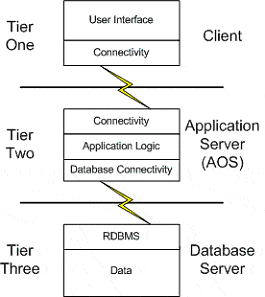For implementing any Human Resource Information System (HRIS) project successfully, the system design requirements should be given utmost importance and it must have scope for customizations as per the requirements of the end users. The system should have various inbuilt provisions and be developed by carefully analyzing the end users/customers’ requirements and the technicalities involved in the entire process and the end results which are expected from the module.
Implementing an HRIS system requires careful planning, setting up of systems and processes in place, clear definition of objectives/goals and an integrated approach. A well designed HRIS system can eventually lead to improved organizational productivity and vice versa may also be true if it is implemented in an unplanned manner.
HRIS Customers/Users
The customers or users can be both employees and non-employees.
- Employees include managers and data analyzers, potential decision-makers, clerks, system providers and to certain level those who rely on the system for self-help. Managers are generally the regular managers, directors, president, vice-president, CEO, etc.
- According to Miller (1998), what various managers have in common is their very key requirement of having an access to accurate data which can facilitate their decision making in connection with people matters. HRIS provides should provide information on performance appraisal, recruitment, selection, training, maintenance, potential appraisal, pay-roll, group force, areas of improvement and thereby contribute in formulation of strategic goals and objectives.
- The Data Analyzer on the other hand helps not only in collecting the relevant data but also filtering and examining them for the managers. The verification of the data helps the managers in decision making. There are various models available for the data analyzer.
- The potential Decision-Makers are helped by the technical analysts, who interpret the data through various programs into an easy language so that the managers can have an easy accessibility to them.
- Clerks mostly dedicate their time in providing the backup support and spend most of their time in providing assistance. They retain each and every minute detail of HR functions to assist HRIS. There are also certain employees who rely on self-help. Fr e.g., they plan their own vacations or retirement schemes on the basis of company policies in a computerized form.
- The non-employees job seekers rely on job portal for gathering knowledge of the HRIS. They don’t really interact directly but on certain servicing partners.
As it has been discussed, that the users of HRIS module may be different and also that they have different usage requirements. Some are simply involved in feeding the information and data, while few simply glance through the information in report forms and some pay a careful attention to the data and information, analyze the trends and use it in their day to day decision making.
On the basis of classification in terms of usage of data and information, the data can be essentially classified into 3 categories:
- Information about the employees, which may include their biographical details and equally information regarding their knowledge, skills and abilities or competencies.
- Organization based information like organizational structure, job description and specifications, various positions and jobs, etc.
- The third kind of information will essentially be a combination of the above 2 categories. For example: information which gives an idea about employee performance (Performance appraisal) and information about the Compensation of the employee.
HRIS Architecture
Any System Architecture should essentially include three key features and these are Components, Collaborators which describe about the pattern of interaction between the components and Connectors which explain the communication pattern between the components. Depending upon the requirements, the HRIS architecture can be 2-tiered, 3-tiered or multi-tiered architectures.
- Two-tier architecture: The Two-tier or Client-Server architecture came into origin during 1980’s. This form of architectural framework can be used for meeting the day to day regular requirements and was developed for the purpose of serving low-powered processes across PCs within an organization. In the two-tier architecture each and every minute detail of the clients are noted in the PCs and can be derived by the organization as and when required in a easy manner. Even some complex operations are done in this architectural framework.

- Three-tier architecture: During 1990s the servers played the role of a database server as well as an application server.

But with the advent of both, HRIS professionals demanded much more elaborate processes. Two tier architecture, even though is inexpensive but has limited applications and there is interdependency of components. On the other hand, three tier architecture even though is a refined version and provides additional advantages, still has various limitations.
- N-Tier Architecture (introduction of application server-HTML): N-Tier architecture can be regarded as an improved version of 3-Tier architecture and it provides the added advantages of load balancing, enabled worldwide accessibility, facilitates extra-savings space and easy generation of data.

N-TIER Architecture with ERP
HRIS continuously interacts with other operational areas within an organization. In the diagram above, there are three different layer which gives rise to N-Tier design. There are various web servers which provide the different databases modules and languages. The main objective is to formulate the goal of the business process in a single phrase so that all the layers can easily understand it and get moving on it. Though the process is complex, but until and unless the end users are clear of the main objective. It actually provides a single browser to store and retrieve database by the end users.
HRIS Implementation
Different authors have described different steps for implementation of HRIS in an organization. It is essentially a planned and an integrated approach involving the top management, HR Managers and a team of Technical Consultants and Specialists. A clarity of the objectives and the organizational goals is very crucial before working upon the module implementation.
Planning is the basis for implementation on which the chance of implementation successfully depends. It provides the framework for the choice of project manager or consultant, choosing certain project experts, defining reports and management methods, a good implementation team, operational areas, budgetary methods, analyzing and comparing existing and future processes, hardware as well as software determination, customize modernized techniques, interaction of user and software for acceptance. In the ensuing discussions, we will cover in detail the stages involved in implementation process, evaluation of the entire process and the pitfalls involved in the implementation stages.





